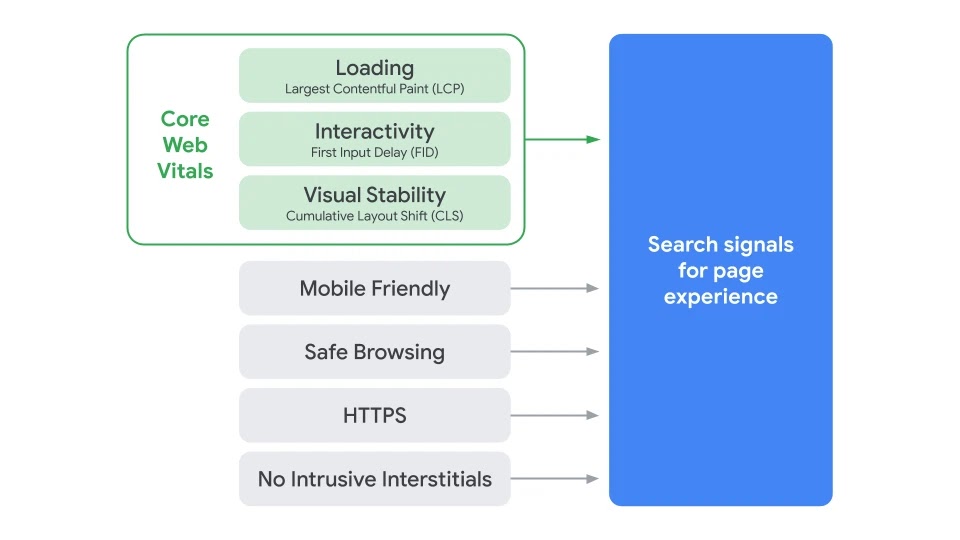
The terms ‘workflow’ and ‘workstream’ are sometimes used interchangeably in error.
Workflow is the pace or rate of speed at which the work you are doing takes place. It might also be used to describe a process.
A workstream, on the other hand, is defined as “the organized output of several distinct, and often unrelated, work groups.”
The connection between enterprise SEO and digital marketing is morphing as customers increasingly demand digital experiences that are optimized based on their habits, preferences, and intent across channels.
SEO is often viewed as the voice of the consumer. From macro trends in the market to insights at the most granular level, SEO feeds intelligence to digital marketers.
As a result, we’re seeing a greater number of these cross-departmental workstreams in play.
In fact, according to Gartner, 35% of digital marketing leaders saw the biggest challenge in 2021 coming from within the organization, where building and maintaining cross-functional partnerships is increasingly essential.
This is why it is essential to have fast and efficient workstreams in place across your marketing and digital teams in 2022.
4 Key Enterprise SEO Workstreams To Fast-Track Digital Success
These four enterprise SEO workstreams are integral to your holistic digital marketing success in this hyperconnected environment.
IT + Website
Historically, the relationship between IT and SEO has been a turbulent one.
This is especially true when there has been an immediate need to make fixes, add content, and interact with CMS systems.
However, today’s real-time reality means that this crucial workstream needs attention.
There is no point in having a website unless it is structured for SEO, has the correct content (more on that later), and converts.
All this does is create ‘traffic for traffic’s sake.’
Google’s Page Experience Update is bringing IT and enterprise SEOs closer together as Google looks to reward healthy sites (as measured by Core Web Vitals).
 Image from developers.google.com, January 2022
Image from developers.google.com, January 2022As Google continues to focus on the user experience, the pace of algorithmic change will continue alongside new updates and technical guidelines
Make sure you understand IT challenges such as balancing pressure from the CTO and maintaining security and privacy despite search and digital’s needs.
Ensure you are liaising with your IT team regularly on:
- Website design and structure: Whether it’s a new build, a refresh, or a migration, you must ensure that responsive design meets technical SEO requirements.
- IT development cycles: There is nothing worse than having programs and significant changes stalled, especially for Core Web Vitals.
- Core Principles: Ensure your site is adhering to all the advice Google gives on Core Web Vitals, including on mobile.
- Structured data: Share knowledge on things like schema markup and thin/duplicate content with IT.
- Run regular audits and makes sure any website errors and broken links are fixed quickly.
Resources To Learn More
Content + Creative
The importance of aligning enterprise SEO teams and content cannot be understated.
SEO insights not only fuel content but also ensure that it is optimized and discoverable, so it converts.
What a content writer might think is an excellent topic might not be right from an SEO and demand point of view.
SEOs hold the keys to a lot of the content kingdom, from uncovering intent to optimizing for targeting topics in demand.
The most forward-thinking organizations are aware that to drive maximum business impact from marketing and lead transformation in their digital organizations, they have to utilize SEO and content as the catalyst to fuel success.
The re-emergence of E-A-T principles is also helping drive closer collaboration between SEO, IT, and content workstreams.
The next step in this relationship relies on the real-time and automated optimization of dynamic content and pushing this out across all digital channels.
Continually build the relationship with content strategists and creators by:
- Planning together: Theme, messages, calendars, and assets.
- Sharing insights: The most vital content insights come from SEO.
- Optimize at the point of creation: Ensure your content is dynamic and primed for use across multiple digital channels – locally and on mobile.
- Utilize the powerful combination of real-time search insights and automation.
- Ensure all your content creators understand writing for users and basic SEO principles.
- Ensure SEOs understand the nuances of writing content.
Resources To Learn More
Demand + Lead Generation
Your search presence is vital to any type of lead or demand generation campaign.
The challenge for many is ensuring consistency, continuous motion, and untimely conversion.
Therefore, SEO must work closely with demand generation, from identifying top-of-funnel opportunities to optimizing bottom-of-the-funnel assets.
While some businesses have different workstreams that can cause friction between demand generation, the best know how to collaborate and focus on key KPIs (beyond just traffic) such as engagement and conversion.
This is where content, SEO, and demand generation workstreams should converge to a large degree to create and optimize lead magnets.
After all, demand generation includes social media, paid digital, webinars, email, and much more.
At its core, SEO is the ‘in-demand’ and most cost-effective demand generation channel in itself.
However, it’s imperative to work closely with your demand generation team to help optimize and measure all types of campaign channels.
- Ensure you have an SEO professional as part of (or very close to) your demand generation team.
- Utilize your data to help identify personas and help create optimized content for them.
- Share insights into new consumer behaviors and new opportunities.
- Work together to build complementary demand (audience) and lead-based strategies. (conversion). See where and how SEO can complement channels such as PPC.
Resources To Learn More
SEO + PR & Communications
An old phrase is “SEO is PR, and PR is SEO.”
In many ways, that is true, as SEO is good for branding and reputation management.
On the other, many other, more complex PR channels can benefit from improved workstreams.
When working together, SEO and PR help each other and the organization as a whole.
SEO success is based on great content and amplification, and PR helps maximize content value.
Vice-versa, SEO equips PR teams with audience insights and optimizes the media assets they create.
Make sure you are partnering very closely with PR to ensure your brand is perceived correctly, as this also impacts conversions and revenue.
Building a good workstream with PR partners helps:
- Align your messages and stories.
- Building, sharing & amplifying content with digital PR and social.
- Reaching wider media audiences and with influencers.
Resources To Learn More
Conclusion
Improving workstreams improves campaign performance.
Regardless of where SEO sits, it must be engrained across the organization for maximum impact.
From product through to sales, SEO helps every aspect of the business.
Savvy marketers are building interdepartmental relations and utilizing technology and automation to further bridge knowledge gaps and fast-track digital success.
More resources:
Featured Image: optimarc/Shutterstock







